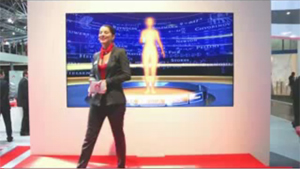The production of ductile iron began in the middle of the last century. Since its inception, nodularity and metallurgical structures have been difficult to control from a process consistency perspective. The reason for this is that magnesium recoveries with existing treatment practices average 50%, so only half of the magnesium added ends up in solution. The remainder sticks to refractories, enters the melt as inclusions, or is removed as slag.
The INITEK process manages the variable which is at the root cause of these problems and that is the un-controlled upstream melting operation of the liquid base iron (fluctuating metallic charge quality, melting rate and holding time). This variable is known as the oxygen / sulphur activity and has been the subject of much research over the past decade. The INITEK process utilizes this oxygen / sulphur activity to create a primary nucleation event, which prevents the secondary magnesium treatment from combining with oxygen and sulphur. Consequently, the magnesium recoveries can be as high as 95%.
These higher <link topics-suppliers charging-materials.html _top>magnesium recoveries allow foundries to reduce consumption of magnesium and rare-earth by as much as 45% - a significant savings. It also significantly improves the intrinsic quality of manufactured ductile iron components. Problematic magnesium oxides and sulphides no longer reduce the fluidity of the melt. Consequently, superheating of the alloy to achieve the necessary fluidity can be reduced by 12% to 18%. The energy consumption benefit is obvious.
Lowering the pouring temperature of ductile iron generates further savings all along the foundry process chain including reduced refractory wear, reduced fines generation in the sand system, and increased mold line speeds.
Rework time is also reduced as castings have a better surface-finish, shorter shot-blasting times, and improved soundness. INITEK produced ductile iron castings can also offer better dimensional accuracy as volumetric and linear shrinkage is reduced.
All in all, the INITEK process can achieve a manufacturing cost reduction in the range of 4% to 13%. The global CO2 footprint contribution of foundries adopting the INITEK ductile iron process is also significantly reduced.
| Foseco Foundry Division, Vesuvius GmbH is a leading manufacturer in "Inoculation devices", "Moulding sands", "Feeder sleeves" and more. For further information and contact details click here: Foseco Foundry Division, Vesuvius GmbH |



